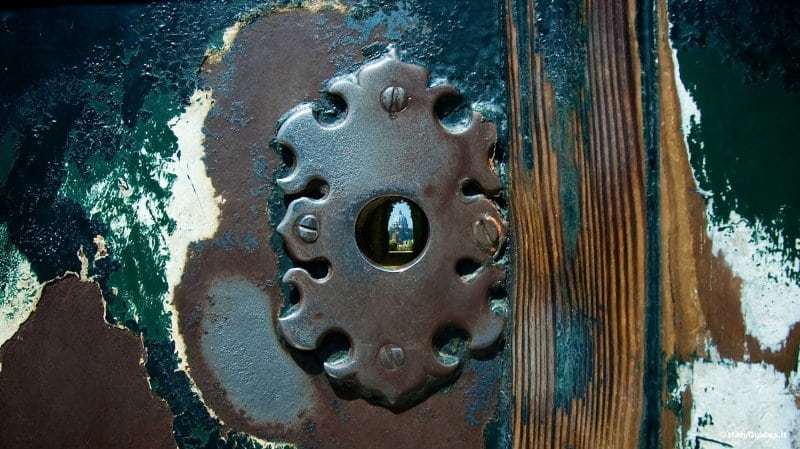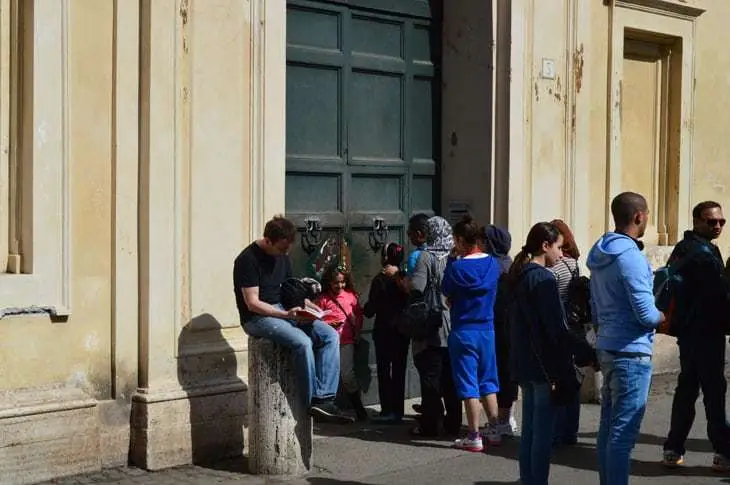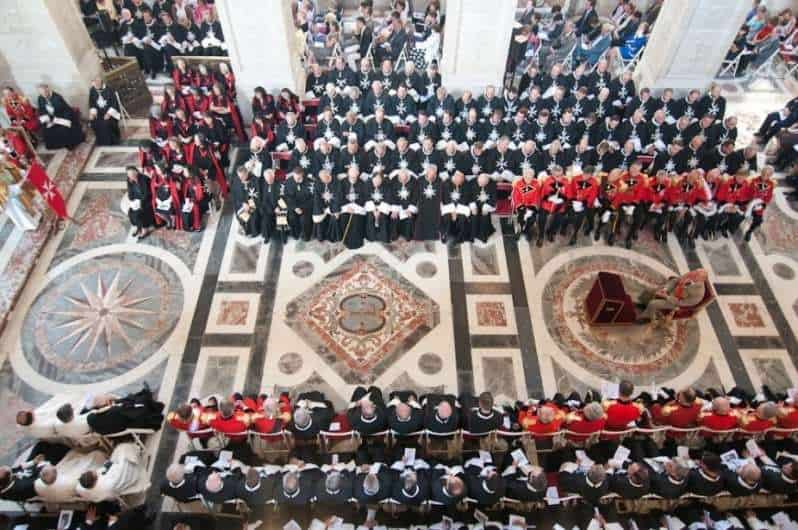A sweeping view of Rome is perfectly contained in the keyhole of a non-descript looking door on the Aventine Hill, neatly placing the dome of St. Peter’s right in the center. The doorway leads to the Priory of the Knights of Malta, I Cavalieri di Malta, or more properly, the Knights of St. John Hospitaler — one of the last surviving orders of knights left over from the Crusades. The Aventine villa houses the Order’s ambassadors to Italy and the Holy See.
Ambassadors? Yes. The Italian state recognizes the sovereignty of this ancient Military Order, which means there are actually three nations and three national capitals contained within Rome: Italy, the Vatican, and the Knights of Malta.
Background
The Knights of the Order of St. John of Jerusalem were formed long before their reign on Malta. The Order was originally established in 1085 as a community of monks responsible for looking after the sick at the Hospital of St. John in Jerusalem. They later became a military order, defending crusader territory in the Holy Lands and safeguarding the perilous routes taken by medieval pilgrims. The Knights were drawn exclusively from noble families and the Order acquired vast wealth from those it recruited.
The Knights came to Malta in 1530, having been ejected from their earlier home on Rhodes by the Turks in 1522. Charles V, the Holy Roman Emperor, gave them the choice of Malta or Tripoli as a new base. Neither was to their liking, but nothing, they thought, could be worse than Tripoli.
Having chosen Malta, the Knights stayed for 268 years, transforming what they called ‘merely a rock of soft sandstone’ into a flourishing island with mighty defenses and a capital city coveted by the great powers of Europe.
The Order was ruled by a Grand Master who was answerable only to the Pope. Knights were chosen from the aristocratic families of France, Italy, Spain, England and Portugal. On acceptance into the Order they were sworn to celibacy, poverty and obedience.
The first rector of what was to become known as the “Order of the Hospital” was the Blessed Gerard. With his Bull of 15 February 1113, Pope Paschal II sanctioned the establishment of the Hospitallers’ order, dedicated to its patron, Saint John the Baptist. The Pontiff placed the Order under the direct protection and ecclesiastical authority of the Holy See. Pope Callixtus and subsequent Pontiffs granted the Order additional privileges over the next century. Gerard himself died in 1120 but the work of the hospice, which at one point was said to house two thousand patients, continued. By 1126, the Order had begun its military role in the defence of pilgrims in the Holy Land, building castles and other fortifications throughout Palestine. Their seat was the vast Krak-des-Chevaliers, acquired in 1142. Built upon an older Arab structure, it was the knights’ chief stronghold by 1144 and finally fell during a siege in 1271. The imposing fortress still stands today.
The Order of the Hospital was not only the first military-religious order of chivalry, but indeed the first order of knighthood of any kind. Previously, knights did not serve in corporate bodies other than the armies of particular sovereigns. The Order of the Temple, the Teutonic Order and the Order of Saint Lazarus were founded soon after the Order of the Hospital. Each of these orders had its own purposes, of which military defense was but one. Until this time, most knights had been minor feudatories obliged, as part of the feudal system, to undertake military service for a prescribed number of days each year; some were full time soldiers who served in garrisons.
Even at this early date, the Order of Malta was both a religious order and a military brotherhood. Today, its Grand Master is accorded the singular style “His Most Eminent Highness” and accorded a precedence in the Roman Catholic hierarchy immediately following that of the most junior cardinal. There are still professed knights of the Order, from among whose number Grand Masters are elected, who take religious vows namely celibacy, obedience and poverty.
Read further… http://www.orderofmalta.int/history/639/history-order-of-malta/?lang=en




